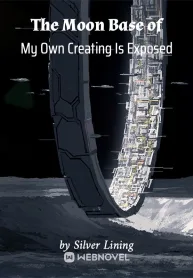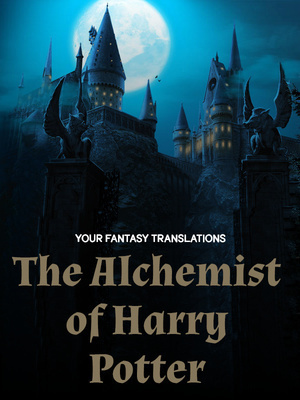Lao Jiao was silent for three seconds.
Taking a high-level apprentice will put a lot of pressure on the teacher himself.
Taoist Master Jiao's expression made the immortal brother Dr. Cao Zhao and others feel happy: Look, look, the old kid reacted too late.
The serious Professor Jiao coughed twice and said that he would no longer ask basic questions about this outstanding student and directly inserted the case.
That’s right. An extraordinary and outstanding doctor like Dr.
Simply put, Mr. Jiao also wanted to see if Mr. Xie would overturn.
“Check this child’s pulse as you just said.” Professor Jiao gave the task.
How to get this child to stretch out his little hand when he is "socially afraid" is a problem.
The family members coaxed the baby very cooperatively: Don’t be afraid, just let the doctor sister touch her little hand.
Seeing that Xie Juan Wang is likely to encounter a difficult situation, Ziwa will overturn?
The people who are least worried about this are the Guoxie and Shouer people. They know very well that Dr. Xie has another magic weapon that is very useful for dealing with children: Dr. Xie’s appearance.
Children best embody human nature: love flowers when they see them.
Otherwise, how could this bad guy like the fairy brother be so successful in pediatrics?
“Is your sister pretty?” Dr. Miao Tianying, who is regarded as the bad guy in pediatrics alongside Dr. Cao Zhao, personally showed family members how to respond to the doctor.
With the coaxing of his mother and uncle, the baby boy emerged from his mother's arms with his little tortoise head. The moment his eyes looked at the doctor sister, he immediately became as demented as Cao Zhile's child: Sister Tianxian.
Seizing the opportunity, Dr. Xie held one of the baby's arms and performed an incision on the baby.
After a while, a group of spectators looked at each other and suddenly became suspicious: Where did Xie Xie’s pulse go?
Doctor Xie’s hands were not even on the Cun Guanchi area.
Fortunately, there were other Chinese medicine practitioners at the scene to give on-site explanations and help the Western doctors to clear up their doubts.
Speaking of it, Mr. Jiao’s question from the beginning was a trap, but King Xie Juan’s answer had another mystery.
The question Mr. Jiao asked did not refer to a specific age group of children.
Similar to the experience of Western medicine based on clinical cases, Chinese medicine must treat children in stages.
Xie Juan Wang’s answer to this question can be called clever, and he only talks about the general similarities between children regardless of age group.
Doctors from the West, Dr. Xie’s classmates and teachers: Well, King Juan is very cunning. He knows that many people are trying to steal his work, so he might as well put out more smoke bombs.
Speaking of what Dr. Xie is currently doing, a fellow Chinese medicine practitioner said: “Children under three years old can use fingerprint reading instead of pulse diagnosis.”
As mentioned before, it is difficult to detect the pulse of children with short hands, but it does not mean that the pulse of the child cannot be felt at all. However, the most satisfying aspect of pulse diagnosis in traditional Chinese medicine is that it is different from Western medicine in segmented pulse diagnosis. If children want to perform pulse diagnosis in the same way, they can only find another way out.
Here again reflects the overall wisdom of traditional Chinese medicine.
Since the human body is a whole, is it possible to measure the pulse from other parts of the human body?
Of course, because the pulse condition can be regarded as an observation sentinel point for doctors to use part of the human body to peek into the entire human body. There must be more than one such human body observation sentinel point, and it will vary from person to person.
Is the theory of traditional Chinese medicine discussed here mysterious?
Western doctors thought: Not really.
Western medicine does exactly the same thing, such as the most common measurement of body temperature. In Western medicine, there are several observation points for doctors to choose from: axillary temperature, oral temperature, rectal temperature, etc.
Where should Chinese medicine doctors find the regular observation points for pulse diagnosis in children?
Physicians in Chinese medicine have observed that, near the beginning of the original pulse diagnosis, children under the age of three begin to have a pulse at the tip of the index finger, which is relatively close to the skin surface and is easily observed by doctors.
This vein is found in modern anatomy to be a superficial radial vein.
Based on the principle that all blood vessels in the human body are connected, the pulse will be closer to the original pulse diagnosis point, and it is easy to be exposed here and easily observed by doctors. It is obvious that Chinese doctors can use this place to replace the usual pulse diagnosis site. The replacement points of pulse diagnosis must be divided into three sections like adult pulse diagnosis.
In adults, the pulse is called Cun Guan Chi. In pediatricians, the fingerprints are called Feng Guan, Qi Guan and Ming Guan, which are also called Yin Guan, Mao Guan and Chen Guan.
The anatomical positions of the three passes are the upper, middle and lower sections of the index finger, counting from near the tiger's mouth. The first section is the wind pass, the second section is the qi pass and the third section is the life pass.
The name of medicine has its origin and must reflect its medical nature.
Feng Qi Ming, three words, there is no doubt that Ming is the most important.
If there is a disease and the fingerprint here reaches the critical point, it means that the child's condition is most critical.
Based on the above principles, we can know that the normal fingerprint of a child is a line that appears under the skin as a faint color and will not exceed the wind level.
How does the doctor read fingerprints?
1. It should be carried out under good natural light, which will help the doctor clearly see the color, depth, thickness, etc. of the fingerprint.
The specific operation is as follows: Dr. Xie uses his thumb to slowly push the side of the child's index finger to make the child's fingerprints more visible.
The direction of pushing cannot be wrong. Based on the fact that the veins are being pushed, the direction of pushing should be from Mingguan to Fengguan, which is the direction of the veins returning to the heart.
This operation seems very simple and easy, right? Definitely not.
How can any medical operation be as easy as Dr. Xie’s, just one time?
“Is this your first time doing it?” Professor Jiao had to ask the student.
Unlike the acupuncture point at Ah Shi in the morning, Mr. Jiao did not instruct Mr. Xie on how to do this operation this time.
Doctor Xie Wanying nodded: This is the first time.
Just because it was her first time, she did not dare to push hard.
After hearing her explanation, the Chinese medicine expert suddenly realized something.
Professor Jiao’s eyes widened.
The Western doctors couldn’t figure out what was going on, so they asked the Chinese doctors one after another.
“That may be the case.”
Without Professor Jiao’s top-notch abilities, a group of traditional Chinese medicine doctors can only perform interpretations that may not be adequate:
The doctor’s purpose of pushing is to make the veins emerge as much as possible.
Therefore, a powerful Chinese medicine doctor may not need to push hard, but can just grab the child's index finger to a three-dimensional position at a certain angle to expose the disease symptoms of the child's fingerprints.
Beginners cannot grasp the key points of the operation at once, and more or less they will have this problem: they have to push hard.
Dr.
Such an operation is obviously more difficult than ordinary human body positioning.
It’s no wonder that Mr. Jiao was also frightened by the student’s behavior.
It is conceivable that if a person has the talent to be a doctor, there is no distinction between Chinese and Western medicine.
Everyone gathered around to look at the child’s fingerprints.
“Oops.” A group of Chinese doctors sighed.
With the explanation just given by the colleagues of traditional Chinese medicine, Western doctors were surprised: a child with no symptoms of illness was found to be sick at a Western doctor’s consultation, but a fingerprint was found to be sick at a traditional Chinese doctor’s office?
Thank you for your support, good night, dear friends~






